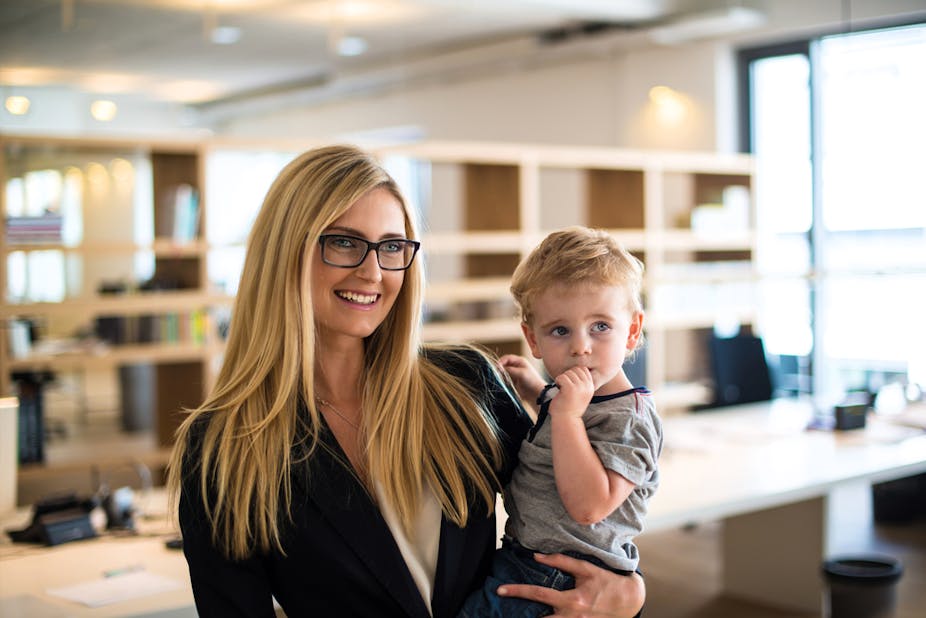Australians are spending more hours at work than ever before and contribute more unpaid overtime each year than their annual leave allowance.
While workplaces can be beneficial to emotional well-being, poor work environments and high levels of work-life conflict are associated with reduced mental health.
Even when we arrive home, we stay plugged in. The unseen cost of our employers providing us with the latest technology is that we’re “switched on” 24-7. Many of us leave our smart phones by our bed; it’s the last thing we look at each night and the first thing each morning.
Work and life are inextricably linked but that doesn’t mean we should revert to the past and try to separate these two worlds. Instead, we need to re-frame how we think about work and life.
Changing our personalities
Beyond time and technology, there is also a growing recognition that we are giving a lot more of our selves to our work than may have been the case in past generations. Many Australians would agree that there is a lot more involved in their everyday work than can be documented in a job description or is recognised by their employers.
A recent University of South Australia study looked at what was required of people working in the social work and teaching professions. The researchers found that working with conflict, poverty, trauma and tragedy (as a regular part of their work responsibilities) all drew substantially on what the authors’ describe as these workers’ “personal domain”. In other words, they needed to give much more of their selves over to survive in their work.
What helped them get through it? Often, it was less tangible things such as family networks, religious beliefs, working class values or a humanitarian commitment that was instrumental to them surviving in their work.
Thriving in changing work times
As a community, we are very limited in the way we think and talk about the personal resources we draw on to sustain and succeed in our work. Take, for instance, “stress”, which is one of the most common ways to talk about the challenges of work.
“Stress” emphasises the overwhelming nature of demands and the powerlessness of individuals to respond. The way this term is used leaves little scope for people to admit they need help and stunts the capacity of workers to think and act in healthier ways. It also does little to help us understand how people thrive in changing or tough work environments.

It’s time to consider new ways of thinking and talking about our changing work contexts. We need a way to consider not just what we do and how we do it, but how our personalities, our emotions, our beliefs, our passions and even our sub-conscious help us to thrive and not just survive in our work.
If we can understand this better, we may be able to not only reduce the costs of worker training or churn and potentially improve work quality, but we may also contribute to better mental health among workers.
For me, I have found the concepts of “iworld” and the “lifeworld” to be useful tools for new ways of thinking.
Lifeworlds in an iworld
Being in the “iworld” is the state of being constantly “switched on” to work. This is encouraged by the incorporation of the latest technology into our lives and the blurring of work-life boundaries.
By contrast, the “lifeworld” can emphasise the importance of whole-of-life activity. It encompasses our “iworld” activity and much more. It can consider not only how work is beneficial for our lives, but how our lives can be beneficial for our work.
So, while the “iworld” can help us think about the recent changes to work arrangements in western societies, the “lifeworld” can be used to uncover the often elusively difficult-to-articulate experiences that converge and help sustain us in difficult work contexts.

The real advantage of the “lifeworld” concept is that it can shift us away from either/or approaches such as “stress” or “work-life balance” - which imply work is bad and life is good - and that foster a sense of work-life conflict.
As a father of a three year old, like all parents, I struggle with the constant tension between work demands, family responsibilities and wanting to be present for my child. When I think about this as “getting the balance right”, I find it impossibly elusive and often experience feelings of guilt.
But when I identify deep connections in my work and work relationships (similar to those I have outside of work), it can be motivating and empowering. And as I attempt to share my work journey with my family, it is even more enriched.
Of course, at 6pm on Friday after a long week, such views can seem vague and idealistic - but no more than the elusive balance between work and life.
New times present new challenges that require new conceptual resources. The “lifeworld” and “iworld” concepts may be just the sparks we need to start a new conversation that is more attuned to the conditions of our contemporary lives.

